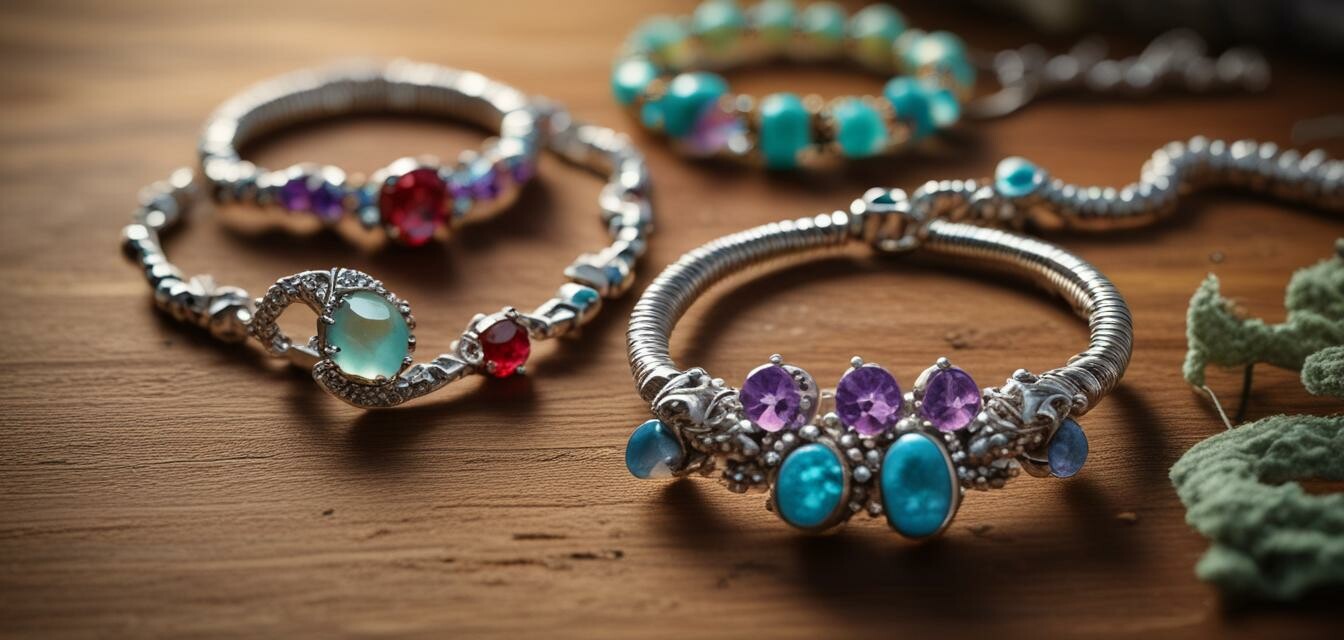
The Link Between Jewelry and Sustainable Livelihoods
- Understanding the impact of ethical jewelry practices on communities.
- Insights into how artisans benefit from sustainable initiatives.
- The role of certifications in identifying ethical products.
- Promoting eco-friendly materials and practices in the jewelry industry.
- How purchasing decisions can contribute to sustainable livelihoods.
The jewelry industry is not just about sparkle and shine; it is deeply connected to social and environmental issues. Ethical jewelry practices are becoming increasingly important as consumers seek to make choices that promote sustainable livelihoods in developing communities. This article explores the intricate link between jewelry and sustainability, illustrating how ethical practices can empower artisans and contribute to their environments.
The Importance of Ethical Jewelry Practices
Ethical jewelry practices focus on creating beautiful pieces that do not compromise the wellbeing of communities or the environment. This section will explore several essential aspects of ethical jewelry.
Empowering Artisans and Communities
Artisans play a crucial role in the production of jewelry. Supporting sustainable practices allows artisans to earn fair wages, maintain their cultural identity, and uplift their communities. Here’s how:
| Benefit | Description |
|---|---|
| Fair Wages | Artisans receive fair compensation for their work, which helps to reduce poverty in their communities. |
| Cultural Preservation | Craftsmanship is often tied to culture; ethical practices help maintain traditional techniques and art forms. |
| Community Development | Investment in artisans leads to improvements in community infrastructure and education. |
Understanding Eco-Friendly Materials
Eco-friendly materials not only reduce environmental impact but also contribute to sustainability. Here are some commonly used sustainable materials in jewelry:
- Recycled Metals: Minimized resource extraction and reduced waste.
- Ethically Sourced Gemstones: Gems that are extracted with minimal environmental impact.
- Organic Materials: Such as wood, shells, and seeds that are sourced sustainably.
- Upcycled Refined Materials: This includes transforming old jewelry into new pieces.
Certifications to Look For
To help consumers identify truly ethical products, various certifications exist. Here are some renowned certifications to consider:
| Certification | Description |
|---|---|
| Fair Trade Certified | Ensures fair labor practices and sustainable supply chain management. |
| Responsible Jewelry Council (RJC) | Focuses on ethical and sustainable practices across the supply chain. |
| Conflict-Free Diamonds | Assures that diamonds are sourced without financing conflict. |
| BLM (Better Life Movement) | Aims to uplift artisans and ensure responsible sourcing. |
Making Responsible Choices
As consumers, making informed decisions can have a lasting impact. By purchasing ethical jewelry, individuals support sustainable livelihoods and contribute positively to both the environment and society. Here are some tips on how to make responsible choices:
Tips for Responsible Jewelry Shopping
- Research brands that prioritize ethical sourcing.
- Look for certifications when purchasing jewelry.
- Ask questions about materials and sources.
- Consider buying from local artisans to further support communities.
- Choose timeless pieces that reduce the need for frequent purchases.
The Impact of Your Purchase
Each purchase you make influences the artisans and communities behind the products. By choosing sustainable jewelry, you are not just acquiring an accessory; you are making a statement about your values. Your purchasing choices can empower others and create lasting benefits. Understanding this link is vital for fostering a more sustainable future.
Pros
- Supports sustainable livelihoods in developing communities.
- Promotes fair labor practices and cultural preservation.
- Encourages eco-friendly materials and practices.
- Creates awareness about responsible consumption.
Cons
- May be higher priced than unsustainable options.
- Limited availability in some regions.
- Requires research to identify truly ethical brands.
Conclusion
There's a profound connection between jewelry and sustainable livelihoods. By supporting ethical jewelry practices, consumers can play an integral role in enhancing not just the lives of artisans but also the environment. As you shop for your next piece, remember that your choices can make a difference. Engage with artisans, seek out sustainable practices, and wear your jewelry with pride, knowing it represents much more than style—it represents positive change.
Learn More About Sustainable Practices
To delve deeper into sustainability practices in the jewelry industry, explore our blog section on Sustainability Practices. You might also find interest in our buying guides available under Buying Guides and discover the latest news and trends in News and Trends.